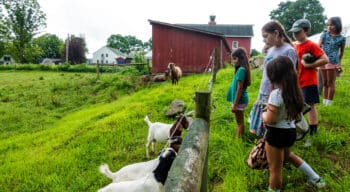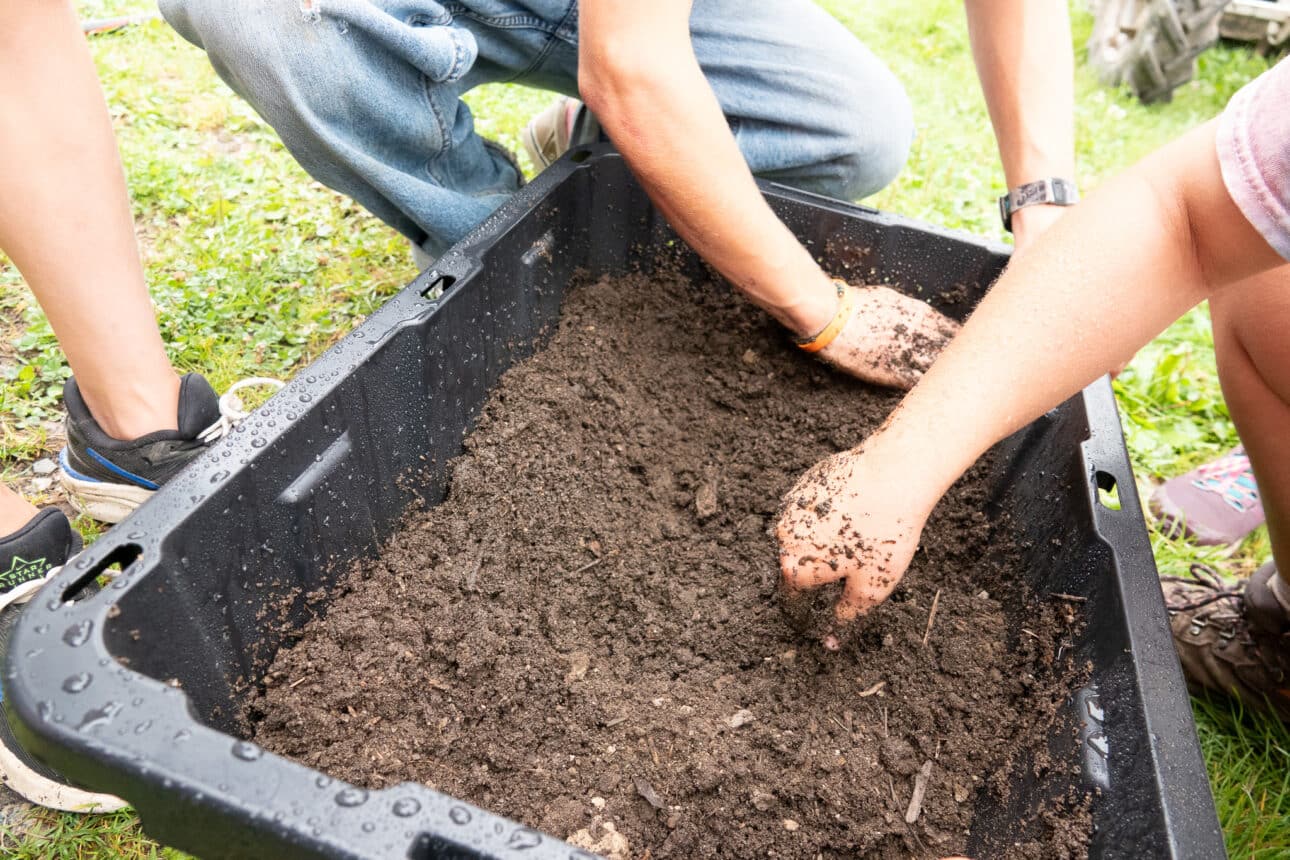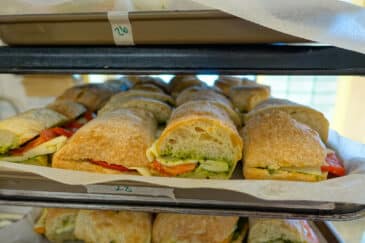Summer on the Farm
September 16, 2024
4 min read

With shorter days and cooler nights arriving, Gabriel’s Field is transitioning from its summer form into a beautiful fall garden. The peak season brought lots of opportunities for campers, families, and school groups to get involved with the harvest, and the garden has provided 8000 pounds of produce (and counting!) for the camp this season. Here are some of the summer’s highlights:
Field Tomatoes: In addition to the heirloom and cherry tomatoes growing under protected conditions in our high tunnels, the tomatoes in Gabriel’s Field had a wonderful season – which can be tricky, as tomatoes are often a disease-prone crop when exposed to the rain outdoors. The tomatoes in our garden this year proved to be disease-resistant and bountiful, giving a much-appreciated boost to the camp’s supply of this classic summer vegetable.
Baby Chicks: Since family camp, one of the highlights of animal chores with campers and school groups has been getting to visit our new flock of chicks that we got this summer! In total, we have 450 new chicks of 3 different breeds: Aquila (which are excellent egg layers), Sagitta (a hardy, dual-purpose breed), and New Hampshire (another dual-purpose breed developed in New Hampshire in the 1930s). This large flock of chicks will help bolster our layer flock to keep producing fresh eggs for the next season, as well as provide more pasture-raised chicken meat for camp over the winter.
Peaches: One of the most special features of Gabriel’s Field is our mature fruit orchard, featuring apple, pear, peach, apricot, and cherry trees. This year was a bumper year for peaches! After diligent spring pruning, there were four peach trees that fruited heavily. Summer campers helped the farm team put hay mulch around the trees to help them retain moisture during the heat of summer, and keep the orchard healthy. Campers also helped thin out the peaches, allowing the remaining fruits to grow and ripen more quickly, so we could enjoy fresh, delicious peaches before the end of summer. Two of the trees ripened later, allowing for a second succession of peaches for school groups and Gap program students to enjoy.
Animal Companions: In addition to providing meat for camp come fall, our 3 goats have spent the summer hard at work for us munching on invasive species encroaching on our pastures – particularly the bittersweet and buckthorn. While our 2 male sheep prefer grazing on grass, the goats would rather browse on shrubby plants, so they balance each other out and make a good team. After the invasives are defoliated by the goats, it’s much easier for us to come in with chainsaws and hedge trimmers to really knock back the plant growth around the native trees. In conjunction with this, the farm team has moved our 6 pigs to treelines along the edges of our pastures. Since pigs love to forage by rooting around everywhere, they make quick work of smaller weeds and shrubs, leaving behind bare soil. Finally, once the pigs move somewhere else, the farm team plants forage crops like grasses and clover in place of the invasive species, working to reclaim the edges of Glen Brook’s pastures one treeline at a time.
Winter Squash: The farm team took advantage of synergies between our farm animals and vegetable garden in order to produce a huge crop of winter squash this year! Over the winter, our flock of chickens lived in a large fenced-in area – where they cleared the ground of weeds and fertilized the soil with their manure – making it an ideal spot to plant nutrient-loving vegetables. Our winter squash particularly thrived in the old chicken yard, so by the time family camp rolled around, our campers were able to harvest over 2000 pounds of winter squash! We harvested a delicious variety of squash, including butternut, acorn, spaghetti, kabocha, and pie pumpkins; but, almost half of our harvest was Blue Hubbard squash, which is known for its size (some of ours weighed over 45 pounds), heartiness, and being perfect for squash soups. Thanks to this squash harvest, Chef Robyn will have a great source of hearty produce to use throughout the winter, when the cold weather will slow down other harvests.
But just because we’re past the peak harvest season doesn’t mean the garden is done for the year. Cool-weather crops like brassicas, lettuce, carrots, beans, and peas are now thriving in Gabriel’s Field, after taking a break over the summer. Once the heat-loving summer crops of tomatoes, peppers, eggplants, and cucumbers are done growing in the high tunnel, cool-weather greens like spinach and kale will take their place so they can get established before winter, and we’ll be able to harvest them all fall and winter long.
By: Charlie Saunders, Farm Staff





















